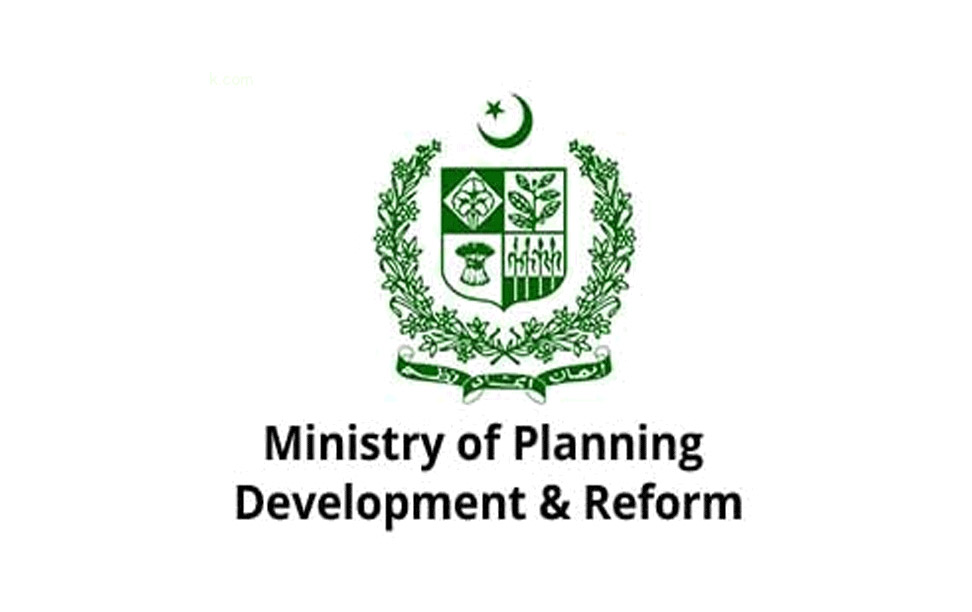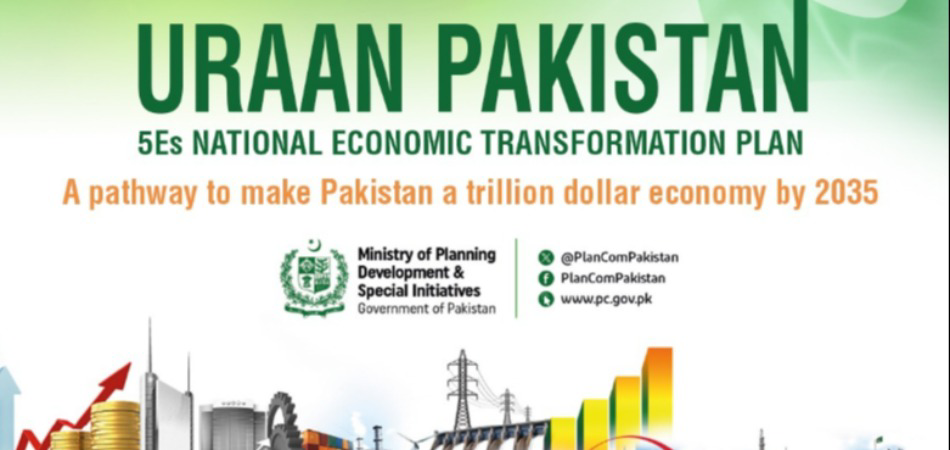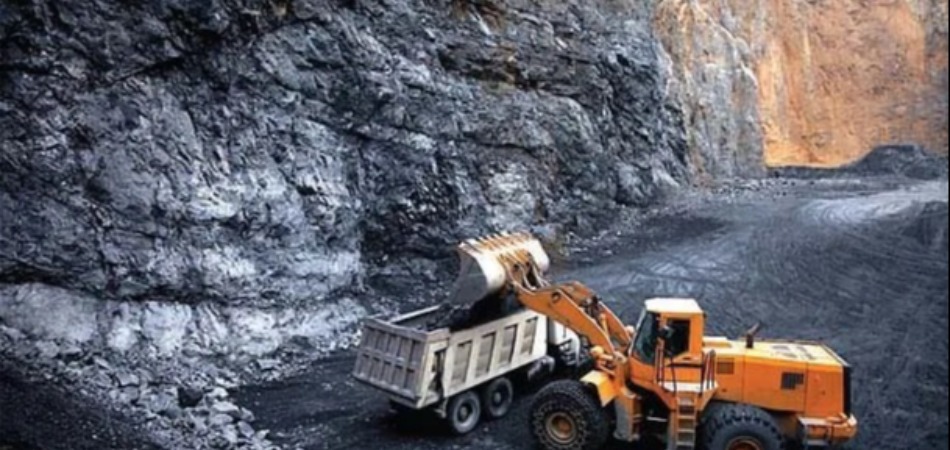GDP growth target of 4.8% to be achieved in FY22: Ministry

By MG News | February 25, 2022 at 05:21 PM GMT+05:00
February 25, 2022: Despite considerable international geopolitical downside risks and emerging commodities supercycle phenomena, the government on Friday said that Pakistan's economy would reach around the original National Economic Council (NEC) economic growth target of 4.8% for the fiscal year 2022 (FY22).
According to a Mid-year Economic Review (July-Dec 2021-22) issued by the Ministry of Planning, the agriculture sector is expected to achieve the envisaged full-year growth target of 3.5% keeping in view the impressive performance of the Kharif crop and prospects of the good wheat crop, however, agriculture growth is mainly contingent upon availability of certified seed and pesticides during the Rabi season.
The industrial sector was projected to grow by 6.5% based upon Large Scale Manufacturing (LSM) target of 6%. However, with the revised full-year number of LSM for FY22, achieving targeted 6% growth is now unlikely.
The construction sector is expected to post healthy growth due to the construction amnesty scheme and concessional credit availability for the housing sector, the report added.
It said the services sector growth is mostly reliant upon the performance of commodity-producing sectors and imports.
The expected revival in the commodity-producing sector and higher than anticipated
growth in imports will push the services sector growth upward. Higher financial intermediation, and 38% growth in IT-related services will also provide an additional boost to the Social and Community services sector.
On fiscal and external accounts, slippages are expected as pressures on imports will only gradually moderate and notwithstanding stellar revenue efforts on taxation side, the expenditure side will remain under pressure to finance the delivery of social sector services and vaccination rollout programs.
The report added that the Annual Plan 2021-22, which was presented to the NEC meeting held on June 07 2021, was presented against the backdrop of partial closure of economic activities due to containment measures to check the rapid spread of the COVID-19 pandemic.
Therefore, keeping in view the uncertainties, a cautious approach was adopted to set growth targets for FY22. The Annual Plan for 2021-22 envisaged GDP growth at 4.8% based upon contributions from agriculture (3.5%), industry (6.5%) and services (4.7%).
During the first half of the current fiscal year (1HFY22), industrial and services sector activity picked up and agriculture sector performance looked impressive as far as estimates of Kharif crops are concerned.
This pick-up is evident from an increase of 71.2% in car sales during 1HFY22 to 114,765 units in comparison with the same period of last year, sales of high-speed diesel (HSD) hit an almost four-year high at 0.84
million tons in October, and electricity consumption rose by 13% during 1QFY22.
Credit to the private sector reached its highest ever level. Despite monetary tightening, auto financing is up by 34%, credit card spending is up by 26%, housing finance by 72% and personal loans by 72% in January 2022 over
January 2021 reflects immense demand pressures in the economy.
Google mobility index shows a 50 percent increase in mobility across Pakistan over the baseline (pre-Covid), which means that economic activity is likely to be even higher than pre-Covid level. SECP registered companies posted the highest ever increase in profitability in almost a decade during 1QFY22 and newly registered companies grew by 44% in 1QFY22.
The report said the broad-based improvement in economic performance is indicative of building on the V-shaped growth recovery achieved during FY21. However, the tenuous spillover between growth acceleration and the external sector vulnerabilities once again surfaced during 1HFY22.
The structural characteristics of the balance of payments constrained growth along with a global surge in commodity prices manifested in the highest ever import surge in December 2021.
These developments led to recent fiscal and monetary policy responses aimed at rebalancing growth in aggregate demand with the external sector sustainability. While all high-frequency indicators are reflecting growing economy.
The report added that the current fiscal year started with positive prospects for building upon the momentum of economic growth achieved during the last fiscal year FY21.
The external environment underpinned by the global commodity price hike was feeding into initially perceived as the transitory buildup of higher prices of energy and import-based consumables.
Last year’s rally in international prices of commodities appears to be now turning into a commodity super-cycle that is likely to prevail over an extended period of time. In its latest January 2022 projections, International Monetary Fund (IMF) has revised down economic growth for advanced economies from 5% in 2021 to 3.9% in 2022 and for emerging and developing Asia from 7.2% in 2021 to 5.9% in 2022. International crude oil prices during January 2022 are already scaling a 7-year high level.
The report added that other commodities prices and shipment predicaments are major headwinds as the US, UK, EU and Germany and many emerging markets have been hit by elevated levels of inflation in almost 3 decades. In this backdrop, it is not surprising that inflationary pressures mounted in the economy and the government has to adopt demand management tools to counter inflation.
APP
Related News
| Name | Price/Vol | %Chg/NChg |
|---|---|---|
| KSE100 | 130,686.66 280.01M |
0.26% 342.63 |
| ALLSHR | 81,305.25 897.01M |
0.35% 281.26 |
| KSE30 | 39,945.45 114.02M |
0.09% 37.19 |
| KMI30 | 190,698.05 148.61M |
0.61% 1163.05 |
| KMIALLSHR | 55,074.15 495.43M |
0.53% 290.50 |
| BKTi | 34,568.40 28.73M |
-1.07% -372.33 |
| OGTi | 28,739.35 22.59M |
1.57% 443.29 |
| Symbol | Bid/Ask | High/Low |
|---|
| Name | Last | High/Low | Chg/%Chg |
|---|---|---|---|
| BITCOIN FUTURES | 110,215.00 | 110,525.00 110,155.00 |
-200.00 -0.18% |
| BRENT CRUDE | 68.78 | 68.89 68.78 |
-0.02 -0.03% |
| RICHARDS BAY COAL MONTHLY | 97.50 | 0.00 0.00 |
-0.75 -0.76% |
| ROTTERDAM COAL MONTHLY | 108.45 | 109.80 108.45 |
-0.55 -0.50% |
| USD RBD PALM OLEIN | 998.50 | 998.50 998.50 |
0.00 0.00% |
| CRUDE OIL - WTI | 67.04 | 67.18 67.00 |
0.04 0.06% |
| SUGAR #11 WORLD | 16.37 | 16.40 15.44 |
0.79 5.07% |
Chart of the Day
Latest News
Top 5 things to watch in this week
Pakistan Stock Movers
| Name | Last | Chg/%Chg |
|---|
| Name | Last | Chg/%Chg |
|---|




 Trade Balance
Trade Balance
 CPI
CPI